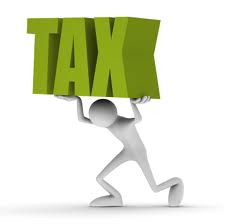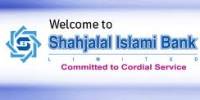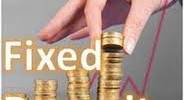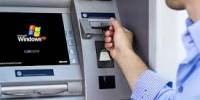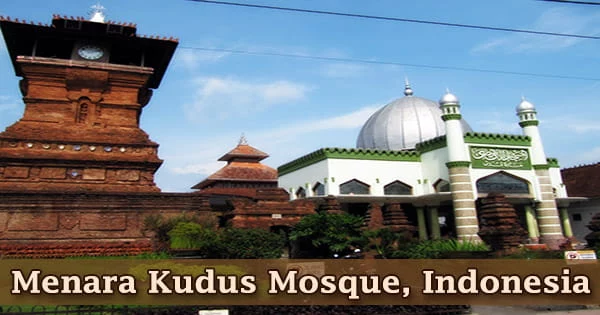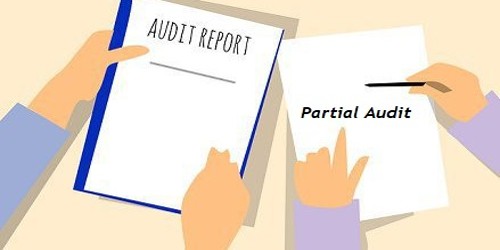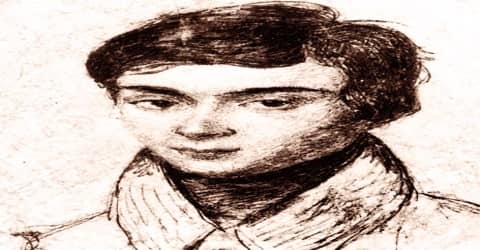Introduction
Each and every person is affected by tax. The dictionary meaning of ‘tax’ is “a contribution exacted by the state.” According to Justice Oliver Wendell Holmes, Jr. (mentioned in the verdict of Compania de Tabacos v. Collector case in 1927), “Taxes are what we pay for a civilized society.” In the similar way, the US President Franklin D. Roosevelt (1936) has also mentioned that “Taxes, after all, are the due that we pay for the privileges of membership in an organized society.” In the broader sense, “A tax can be defined meaningfully as any nonpenal yet compulsory transfer of resources from the private to the public sector, levied on the basis of predetermined criteria and without reference to specific benefit received, in order to accomplish some of nation’s economic and social objectives” (Ray M. Sommerfeld, H. M. Anderson and H. R. Brock, 1980). One member of the British Parliament once mentioned that a man is now born with tax and dies with tax, and he has to pay tax for everything he does even for his laughter, for his cries. However, disguised tax payment has no legal bearing, but the concern is when you are accountable to the tax authority for fiscal matters.
Tax Function Activities under Income Tax Laws:
Tax function activities are of two types:
- Tax compliance activities, and
- Tax planning activities.
- Tax Compliance Activities: These include the functions or obligations according to the provisions of various fiscal statutes.
Following are the tax compliance activities as per various sections the Income Tax Ordinance 1984:
(1) As an assessee (taxpayer):
– Collection of TIN (Tax-payer’s Identification Number) Certificate: u/s (under section) 184B, 184A
– Advance income tax payment, if applicable u/s 48, 64-73
– Preparation of tax return u/s 75
– Payment of tax as per tax return u/s 74
– Filing of tax return and statements in prescribed forms u/s 75
– Maintenance of accounts and documents: u/s 35
– Production of accounts and documents: u/s 79
– Cooperation with income tax authority during inspection (u/s 114), survey (u/s 115), enquiry (u/s 116), and search and seizure (u/s 117)
– Compliance with Notice of Demand (u/s 135) and other notices by tax authority [to file return u/s 77, to file statement of assets and liabilities u/s 80, to attend hearing u/s 83(1), to inform re-assessment u/s 93(1) and others], and
– Joint liability in case of partner of partnership firm (u/s 98 and 99), member of association of persons (AOP) [u/s 98], director of a private company (u/s 100), liquidator of a private company (u/s 101).
(2) As a tax collector on behalf of tax authority:
– Tax deduction at sources (TDS), if applicable, and deposit thereof to the Treasury u/s 48-63
– Giving documents of TDS with necessary information u/s 58, and
– Furnishing annual returns in case of payment of salary (u/s 108), interest (u/s 109) and dividend (u/s 110).
(3) As an authorized/related person of the assessee:
– Appearance on behalf of the assessee at any income tax proceedings u/s 174
– Legal representative to be treated as deemed to be assessee in case of a deceased person u/s 92, and
– Liability in certain cases (as a representative of another person u/s 95, as an agent of a non-resident principal u/s 96, 102 and 103A).
- Tax Planning Activities:
Tax planning means dealing with the tax matters of a taxpayer with a view to maximizing the after-tax rate of return on investments after ensuring voluntary tax compliance. All changes in tax regimes involve turning two types of dials:
- Levels of tax rates
- Relative tax rates varying
– Across different tax paying units
– Across different tax periods for the same taxpayer
– Across different economic activities for the same taxpayer and same time period.
Thus, following are the types of income tax planning activities:
(a) Attempts to have income converted from one type to another (ordinary income vs. capital gain, regular income vs. windfall income, domestic income vs. foreign income, set-off of loss under any head);
(b) Attempts to have income shifted from one pocket to another (taxable vs. tax-exempt sources); and
(c) Attempts to have income shifted from one time period to another (delaying recognition of income, if tax rates are constant or declining over time, instant salary vs. deferred compensation).
Income Tax Rates
Following table shows income tax rates for different taxpayers.
Table-1: Comparative Tax Rates for Assessment Years 2003-04, 2004-05 and 2005-06
Types of Assessee | Type of Income | Tax Rates for AY | ||||
2003-04 | 2004-06 | |||||
| Banka, insurance, financial institutions | (1) Capital gain arising out of | – Transfer of stocks & shares of private limited company | 15% | 10% | ||
| – Transfer of other capital assets | 15% | 15% | ||||
| (2) Dividend income | – Subject to dividend distribution tax u/s 16Db | nil | Nil | |||
| – Not subject to dividend distribution tax u/s 16D | 15% | 15% | ||||
| (3) Other income | Both for publicly traded and not publicly traded company | 45% | 45% | |||
| Other company (except RMG company where tax rate is 10% and textile and jute companies where tax rate is 15% for AYs 2004-05 to 2005-06) c | (1) Capital gain arising out of | – Transfer of stocks & shares of private limited company | 15% | 10% | ||
| – Transfer of other capital assets | 15% | 15% | ||||
| (2) Dividend income | – Subject to dividend distribution tax u/s 16Db | nil | Nil | |||
| – Not subject to dividend distribution tax u/s 16D | 15% | 15% | ||||
| (3) Other income | – For publicly traded companye* Dividend declared by less than 10% or failure to pay declared dividend within SEC stipulated time * Other situation | 37.5% 30% | 37.5% 30% | |||
| – For other company | 37.5% | 37.5% | ||||
| Local authority | (1) Long-term capital gaind | 15% or ATR on total income including capital gain, lower one | Same | |||
| (2) Dividend income | – Subject to dividend distribution tax u/s 16Db | nil | Nil | |||
| – Not subject to dividend distribution tax u/s 16D | 15% | 15% | ||||
| (3) Other income | 37.5% | 37.5% | ||||
| Resident individual assessee, non-resident Bangladeshi, association of persons, firm and other artificial juridical personsf | (1) Long-term capital gaind | 15% or ATR on total income including capital gain, lower one | Same | |||
| (2) Accidental income u/s 19(13) | 20% or ATR on total income including accidental income, lower one | Same | ||||
| (3) Other income | Slab of Total Income | 2003-04 | 2004-2005 & 2005-06 | |||
| On first Tk.On next Tk. On next Tk. On next Tk. On balance Tk. | 90,000 150,000 150,000 250,000 Balance | 100,000 200,000 250,000 350,000 Balance | Nil 10% 15% 20% 25% | Nil 10% 15% 20% 25% | ||
| Minimum tax (Tk.) | 1,200 | 1,500 | ||||
Table-2: Comparative Tax Rates for Assessment Years 2003-04, 2004-05 and 2005-06 (cont’d)
Types of Assessee | Type of Income | Tax Rates for AY | ||
2003-04 | 2004-06 | |||
| Non-company non-resident assessee (except any Bangladeshi) | Total income | 25% | 25% | |
| Note: u/s = under section; RMG = readymade garments; ATR = average tax rate, FA = Finance Act.a Under section 16C inserted by the FA 2002, a bank company operating under the Bank Companies Act 1991, if shows, in the return, profit exceeding 50% of the aggregate sum of capital and reserve, shall pay tax @ 15% of such excess profit as additional tax. b Provision of section 16D (inserted by Finance Act 2003) is applicable for dividends declared on or after July 2003, but not applicable for two types of dividends defined u/s 2(26): (1) any profit remitted outside Bangladesh by a company not incorporated in Bangladesh under the Companies Act, 1994 [clause (dd)], and (2) any payment by a private company of any sum (whether as representing a part of the assets of the company or otherwise) by way of advance or loan to a shareholder or any payment by any such company on behalf, or for the individual benefit, of any such shareholder, to the extent to which the company, in either case, possesses accumulated profit [clause (e)]. Under para 22 (amended by Finance Act 2003) of Part A, Sixth Schedule, dividend income on which ‘dividend distribution tax’ (DDT) is payable by the copany u/s 16D is totally non-assessable and under the provision of the new proviso u/s 54 (replaced by Finance Act 2003), no tax shall be deducted at source on this dividend. Under para 22A (inserted by Finance Act 2003) of Part A, Sixth Schedule, dividend income from a mutual fund or a Unit Fund is non-assessable up to Tk. 25,000. c Last year (AY 2003-04), tax rate for RMG company was also 10%, but textile company was subject to tax rate of 20% and this declared for AY 2003-04 to 2006-07). For new rates, see Rahman, 2004b: 37. d ‘Long-term capital gain’ means the capital gain arising from transfer of capital assets after 5 years from the date of acquisition. e For publicly traded company, if dividend payment is more than 20%, a rebate of 10% of income tax will be allowed (FA 2002, FA 2003 and proposed FA 2004). However, by inserting section 16B by the FA 2002 (not applicable to a banking or insurance company), a provision has been made to impose additional tax on undistributed profit @ 5% if the dividend payment or issue of bonus share within 6 months after the end of the income year has not been at least 15% of paid up capital. For AYs 2002-03 and 2003-04, “undistributed profit” means total income with accumulated profit including free reserve as reduced by the aggregate of dividend or bonus share issued, declared or distributed for that year, the tax which is payable under section 74 and the paid-up capital. From AY 2004-05, “undistributed profit” means accumulated profit including free reserve (changed by FA 2004). f For this category of assessee who owns a small or cottage industry located in the Less Developed Areas or the Least Developed Areas engaged in the production of goods, income tax rebate is allowed for increased production volume as follows: Increase in production volume than preceding year Rate of Rebate (% of income tax attributable to such income) (a) Exceeds 15%, but does not exceed 25% 5% (b) Exceeds 25% 10% | ||||
TIN (Tax-payer’s Identification Number) Certificate under Income Tax Laws:
Under section 184B, each assessee or any person who applies for TIN in the Form prescribed u/r 64B will be given a TIN. The NBR may, with prior approval of the Government and by notification in the official Gazette, specify any class of documents where TIN is to be mentioned (u/s 184AA). However, TIN certificate is compulsory at the time of –
– opening a L/C (letter of credit) for the purpose of import;
– submitting an application for the purpose of obtaining an import registration certificate;
– renewal of trade license in the area of a corporation or of a Paurashava of a divisional headquarter;
– submitting tender documents for the purpose of supply of goods, execution of a contract or for rendering services;
– submitting an application for membership of a club registered under the Companies Act 1994;
– issuance or renewal of license or enlistment of a surveyor of general insurance;
– registration of purchase of land, building or an apartment situated within any city corporation, deed value of which exceeds one lakh taka (not applicable in case of purchase by non-resident Bangladesh);
– registration, change of ownership or renewal of fitness of a car, jeep or a microbus;
– sanction of loan exceeding five lakh taka to a person by a commercial bank;
– issue of credit card;
– issue of practicing license to a doctor, a chartered accountant, a cost and management accountant, a lawyer or an income tax practitioner;
– giving connection of ISD (International Subscriber’s Dialing) connection to any kind of telephone;
– registration of a company under the Companies Act 1994 in respect of sponsor directors; and
– submission of application for a licence as a Nikah Registrar under the Muslim Marriages and Divorce (Registration) Act, 1974. But this is not applicable for a person who has already obtained the licence of a Nikah Registrar, however he has to obtain such certificate within three months from the date of commencement of this provision.
Submission of Income Tax Return: u/s 75
(1) Regular submission Income Tax Return [u/s 75(1)]: Every person is required to submit the income tax return – (i) if his total income during the income year exceeds the exemption limit (Tk. 100,000 for income year 2003-04), or (ii) if he was assessed to tax for any one of the 3 years immediately preceding the income year.
(2) Compulsory submission Income Tax Return [u/s 75(1A) and 75(1B)]: Under section 75(1B), each company is liable to submit the income tax return irrespective of its total income and it is also liable to file the return for the income of any other person for whom the company is assessable. However, under section 75(1A), submission of income tax return is mandatory for the following persons:
- person residing in a city corporation or a pourashava, or a divisional headquarter or a district headquarter, if he: (i) owns a building which consists of more than one storey and the plinth area of which exceeds one 1600 square feet, (ii) owns a motor car (including a jeep and micro-bus), (iii) subscribes a telephone, and (iv) own a member of a club registered under the Value Added Tax Act 1991;
- person who runs any business or profession having trade license from a city corporation, a pourashava or a union parishad, and operates a bank account;
- person who has registered with a recognized professional body as a doctor, dentist, lawyer, income tax practitioner, chartered accountant, cost and management accountant, engineer, architect or surveyor or any other similar profession;
- person who is a member of a chamber of commerce and industries or a trade association;
- person who is a candidate for an office of a paurashava, city corporation, or a Member of Parliament;
- person who participates in a tender floated by the government, semi-government, autonomous body or a local authority; and
- person who has a taxpayer’s identification number (TIN) in accordance with the provision of section 184A.
Timing: Under section 75(2)(c), each company has to submit the income tax return by the 15 July next following the income or, where the 15 July falls before the expiry of 6 months from the end of the income year, before the expiry of such 6 months. Other assessees have to submit the return by 30 September following the income year
Forms of Income Tax Return: There are two Forms for submission of income tax return, which have been outlined in the Appendices.
Appendix-I: Form of Return of Income: FORM ‘A’, a 6-page Form for any income taxpayer (can be used for “Self Assessment” purpose by writing “Self Assessment” on the title page of the Form)
Appendix-II: Form of Return of Income: FORM ‘B’, a 1-page Form for individuals having limited income from salary, wages and/or self-employment (to be used for “Self Assessment” only)
Statements and Documents to Be Attached: Under section 75(2)(d), the income tax return is to be accompanied by the following documents:
(a) Auditor’s Certificate/audited accounts in the case of company;
(b) Statement of income and expenditure account/ Manufacturing, Trading, Profit & Loss account and Balance sheet in the case of other assessees;
(c) Depreciation chart claiming depreciation as per Income Tax Law;
(d) Computation of income according to Income Tax Law;
(e) Statement of assets, liabilities and expenses u/s 80 and u/r 25 in Form IT10B (compulsory in case of self-assessment return or where total income exceeds Tk. 3 lakh);
(f) Statement in the prescribed form and verified in the prescribed manner giving particulars of an individual assessee’s personal and family expenditure to be called life style from income year 2003-04 in Form IT10BB.
(g) Under the first proviso to section 82, a return filed by an assessee, being a company not less than fifty per cent. of whose paid-up capital is owned by persons other than Bangladeshis or a public limited company or a body corporate established or constituted by or under any law for the time being in force, or any nationalised banking, insurance or other financial institution, shall be deemed to be correct and complete if the return is accompanied by a certified copy of the accounts of the assessee audited by a chartered accountant and a certificate as to the correctness of the total income of the assessee signed and issued by the chartered accountant himself in the prescribed form [as per Rule 64A]. “The statement showing computation of total income” shall be enclosed with “the prescribed Form of Certificate u/r 64A.
Income Tax Deducted at Sources: u/s 48-63
Following are the relevant sources from which tax is to be deducted or collected along with the tax rates of deduction.
| Sl. # | Sources | Sec-tion | Rule | Rate of Deduction/Collection |
| 01 | Salary | 50 | Normal average rate of individual taxpayers | |
| 02 | Discount on Bangladesh Bank bills | 50A |
| |
| 03 | Interest on security (not applicable on interest on debenture issued by a local authority or company) | 51 | 20% | |
| 04 | a. Contractor and Suppliers *
b. Oil supply by oil marketing companies * | 52
52 | 16
16 | a. Up to Tk. 1,00,000 – NilTk. 1,00,001-5,00,000 – 1% Tk. 5,00,001-15,00,000 – 2.5% Tk. 15,00,001-25,00,000 – 3.5% Above Tk. 25,00,000 – 4% b. Up to Tk. 2,00,000 – Nil Above Tk. 2,00,000 – 0.75% |
| c. Indenting commissiond. Shipping agency commission | 5252 | 17(1)17(2) | c. 3.5% of total commissiond. 5% of total commission | |
| 05 | a. Fees for doctor’s serviceb. Royalty or technical know-how fee * c. Fees for professional or technical service | 52A(1) 52A(2)
52A(3) | a. 5% of feesb. 10% of royalty or fees
c. 5% of fees | |
| 06 | Payment to a private security service agency and stevedoring agency | 52AA | 5% of amount payable | |
| 07 | Commission to a clearing and forwarding (C&F) agent * | 52AAA | 5% of amount payable | |
| 08 | Cigarette manufacturers (manufacturing manually without any mechanical aid) * | 52B | 3% of value of banderoles | |
| 09 | Compensation for immovable property acquired by Government | 52C | 6% of compensation | |
| 10 | Interest on savings instruments (purchased after 10-06-1999 to before 01-01-2004) * | 52D | 5% of interest | |
| 11 | Bonus to shareholders | 52E | 10% of the amount of bonus | |
| 12 | Brick manufacturer | 52F | Tk. 5,000 for each brick field (at the time of permission) | |
| 13 | Letter of credit (L/C) Commission | 52I | 5% of commission | |
| 14 | Import * | 53 | 17A | 3% of value of imported goods |
| 15 | House property | 53A | 17B | Monthly payment:Up to Tk. 15,000 – Nil Tk. 15,001-35,000 – 3% Above Tk. 35,000 – 5% |
| 16 | Export of manpower * | 53B | 17C | 10% of service charge or fees determined by Government before issuing clearance |
| 17 | Goods or property sold by public auction through sealed tender or otherwise * | 53C | 17D | 3% of sale price |
| 18 | Payment to actor and actress | 53D | 17E | 5% of amount payable, if annual total payment exceeds Tk. 36,000 |
| 19 | Commission, discount or fees | 53E | 5% of commission or fees payable, or discount allowed | |
| 20 | Commission or remuneration to foreign buyer’s agent/representative | 53EE | 2.5% of commission, charges or remuneration |
| Sl. # | Sources | Sec-tion | Rule | Rate of Deduction/Collection |
| 21 | Interest on savings/fixed/ term deposit in any scheduled bank including a cooperative bank or share of profit on term deposit with an Islamic bank | 53F | 17H | 10% of interest or share of profit |
| 22 | Insurance commission to a resident * | 53G | 5% of commission, if annual total commission exceeds Tk. 40,000 | |
| 23 | Remuneration or fees of surveyor of General Insurance * | 53GG | 5% of payment | |
| 24 | Transfer of property * | 53H | 17I | 5% of document value of the property on which stamp duty is chargeable |
| 25 | Dividends (not applicable where ‘dividend distribution tax’ @ 10% is applicable u/s 16D) | 54 |
| |
| 26 | Receipt by way of winnings from lotteries, crossword puzzles, card games and other games of any sort or from gambling or betting in any form or of any nature whatsoever [u/s 19(13)] * | 55 | 20% of the cash receipts or in case of goods or assets, 20% of the value of the goods or assets | |
| 27 | Income of non-resident (unless such person is himself liable to pay tax as agent) | 56 |
|
*Section 82C applicable, i.e., tax deducted at sources (TDS) shall be treated as settled tax.
In the following cases, TDS shall be treated as the ‘settled tax’ or as the final discharge of tax liability.
(1) TDS on ‘Contractor and Suppliers’ [Section 52 and Rule 16] at following rates:
Up to Tk. 1,00,000 – Nil
Tk. 1,00,001-5,00,000 – 1%
Tk. 5,00,001-15,00,000 – 2.5%
Tk. 15,00,001-25,00,000 – 3.5%
Above Tk. 25,00,000 – 4%
(2) TDS on ‘Oil supply by oil marketing companies’ [Section 52 and Rule 16] at following rates:
Up to Tk. 2,00,000 – Nil
Above Tk. 2,00,000 – 0.75%
(3) TDS on ‘Royalty or technical know-how fee’[Section 52A(2)] at 10% of royalty or fees.
(4) TDS on ‘Commission to a clearing and forwarding (C&F) agent’[Section 52AAA] at 5% of amount payable.
(5) TDS on ‘Cigarette manufacturers (manufacturing manually without any mechanical aid)’[Section 52B] at 3% of value of banderoles.
(6) TDS on ‘Interest on savings instruments’ (purchased after 10-06-1999 to before 01-01-2004)[Section 52D] at 5% of interest.
(7) TDS on ‘Import’ [Section 53] at 3% of value of imported goods.
(8) TDS on ‘Export of manpower’[Section 53B and Rule 17C] at 10% of service charge or fees determined by Government before issuing clearance.
(9) TDS on ‘Goods or property sold by public auction through sealed tender or otherwise’[Section 53C and Rule 17D] at 3% of sale price.
(10) TDS on ‘Insurance commission to a resident’ [Section 53G] at 5% of commission, if annual total commission exceeds Tk. 40,000.
(11) TDS on ‘Remuneration or fees of surveyor of General Insurance’ [Section 53GG] at 5% of payment.
(12) TDS on ‘Transfer of property’ [Section 53H and Rule 17I] at 5% of document value of the property on which stamp duty is chargeable.
(13) TDS on ‘Receipt by way of winnings from lotteries, crossword puzzles, card games and other games of any sort or from gambling or betting in any form or of any nature whatsoever [u/s 19(13)]’ [Section 55] at 20% of the cash receipts or in case of goods or assets, 20% of the value of the goods or assets.
Under rule 13, all sums deducted or collected at sources shall be paid to the credit of the Government within 1 week from the date of such deduction or collection by the person making the deduction or collection. The Deputy Commissioner of Taxes (DCT) may, in a special case and with the approval of the Inspecting Additional Commissioner of Taxes or the Inspecting Joint Commissioner of Taxes, permit an employer to pay the tax deducted from any income chargeable under the head “Salaries” quarterly on September 15, December 15, March 15 and June 15.
Under rule 14(1), the amount of tax deducted or collected shall be paid to the credit of the Government by remitting it into the Bangladesh Bank or the Sonali Bank, as the case may be, accompanied by an income tax challan, blank copies of which can be had from the office of the DCT for the purpose.
Under rule 14(2), the person responsible for making deduction, with respect to following 5 cases shall issue a cheque equivalent to the amount of tax deducted at source in favour of the concerned DCT and hand over the same to the person from whom such tax has been deducted and such person shall deposit the cheque through income tax challan form to Bangladesh Bank or the Sonali Bank, as the case may be, and on production of the counter foil of the challan, he shall be entitled to get his remaining dues on the concerned account:
(i) supply of goods or execution of contract under section 52,
(ii) fees for professional or technical services under section 52A(3),
(iii) fees for services rendered by doctors under section 52A(1),
(iv) house property under 53A, and
(v) commission or fees under section 53E.
Under section 117A, the NBR or any other authority empowered by the NBR in this behalf may enter the premises of a deducting or collecting authority to examine, monitor or verify books of accounts and relevant records in relation to: (a) deduction or collection of tax by the concerned authority under the provisions of Chapter VII (u/s 48-63); and (b) deposit of the tax so collected or deducted to the credit of the government as per rules [rules 13-14].
Computation of “Income from Business or Profession” for Income Tax Purpose:
Scope of ‘Income from Business or Profession’: u/s 28
Following incomes are to be included in “Income from Business or Profession”:
(1) Profit or gains of any business or profession carried on or deemed to be carried on by the assessee [u/s 28(1)(a)].
(2) Income derived by any trade or professional association or other association of like nature on account of specific services performed for its members [u/s 28(1)(b)].
(3) Value of any benefit or perquisite, whether convertible into money or not, arising from business or profession [u/s 28(1)(c)].
(4) Deemed income from business or profession u/s 19:
(i) Subsequent receipt back of any loss, bad debt or expenditure [u/s 19(15)(a) and 28(1)(d)].
(ii) Interest on loan from commercial or specialised banks or share of profit to Islamic bank unpaid for two years [u/s 19(15)(aa) and 28(1)(d)].
(iii) Benefit received from any trading liability [u/s 19(15)(b) and 28(1)(d)].
(iv) Trading liability unpaid for three years [u/s 19(15)(c) and 28(1)(d)].
(v) Revenue profit or depreciation recovery from disposal of any building, machinery or plant used for business or profession [u/s 19(16) and 28(1)(e)];
Maximum amount = Original Cost – Written down value (WDV).
(vi) Insurance, salvage or compensation money received on discarding, demolishing or destroying any building, machinery or plant used for business or profession [u/s 19(18) and 28(1)(f)];
Maximum amount = (Original Cost – WDV) – Scrap value.
(vii) Sale proceeds of any capital expenditure on scientific research which is allowed as a deduction u/s 29(1)(xx) [u/s 19(20) and 28(1)(g)].
(viii) Export value of garments exportable against the export quota which has been transferred [u/s 19(23) and 28(1)(h)]. Under rule 30A, an amount equal to 3% of the export value of the garments exportable against the export quota transferred by the assessee shall be deemed to be his income u/ 19(23).
(ix) Profits and gains from any insurance business carried on by a mutual insurance association the income of which is to be computed under paragraph-8 of Fourth Schedule [u/s 19(14)].
(5) Partially ‘income from business or profession[u/s 26(3) and Rules 30, 31 and 32]:
(i) 40% of income from sale of tea [under rule 31]
(ii) 40% of income from sale of rubber [under rule 32]
(iii) Tobacco, sugarcane or other agricultural produce used as raw materials in any industrial production process the income of which is to be computed under the head ‘Income from Business or Profession’ as follows [under rule 30]:
Business income = (Sale value of the concerned agricultural produce recorded in the accounts of the business)
– (Market value of the agricultural produce used as raw materials).
Allowable Deductions to Determine Taxable ‘Income from Business or Profession’:
1. List of Deductions Allowable u/s 29
i)Rent for the premises used for business or profession [u/s 29(1)(i)].
ii)Repair expense incurred by the assessee:
- For the hired premises in which the business or profession is carried on [u/s 29(1)(ii)].
- For the buildings, machinery, plant or furniture used for business or professional purposes [u/s 29(1)(vi)].
iii)Interest payment or profit shared with an Islamic bank in respect of capital borrowed for business or profession [u/s 29(1)(iii)].
iv)Amount credited to any person’s profit sharing account or deposit with an Islamic bank by way of distribution of profit by that Islamic bank [u/s 29(1)(iv)].
v)Amount up to 10% of total income carried to any special reserve (the aggregate amount in which does not exceed the paid up share capital) created by Government approved financial institutions for any approved purposes [u/s 29(1)(v)].
vi)Insurance premium on buildings, machinery, plant or furniture, stocks or stores used for business or professional purposes [u/s 29(1)(vii)].
vii)Depreciation on the assessee’s building, machinery, plant or furniture used for business or professional purposes as per Third Schedule:
Initial depreciation allowance: From assessment year 2002-03, under paragraph 5A of the Third Schedule, initial depreciation allowance is allowed for the first year at 10% on the cost of building and 25% on the cost of machinery or plant (other than ships or motor vehicles not plying for hire or any machinery or plant which has previously been used in Bangladesh).
Accelerated depreciation allowance @ 100% widened: From assessment year 2002-03, under paragraph 7 of the Third Schedule, 100% of cost of machinery is admissible for new industrial undertakings as accelerated depreciation allowance in cases of prescribed sectors.
Normal depreciation allowance: The normal depreciation allowance under paragraph 3 of the Third Schedule is allowed at the specified rates on ‘written down value’ of the concerned asset.
viii)Investment allowance [u/s 29(1)(xa)]: Investment allowance is allowed as a deduction in the year of investment @ 25% on investment by a company in the purchase of new plant or machinery for installation in an industrial undertaking set up in Bangladesh and owned by the company for the purpose of BMR (balancing, modernization or replacement) of the existing plant or machinery [not allowed from income year 2003-04, since this clause is repealed by the FA 2004].
ix)Obsolescence allowance [equal to excess of written down value (WDV) over sale proceeds or scrap value] :
For building, machinery or plant after having been used for business or professional purposes, discarded, demolished or destroyed or the assets sold transferred by way of exchange or compulsorily acquired by a legally competent authority, or exported outside Bangladesh[u/s 29(1)(xi)]. Obsolescence allowance will be computed under Para-10(c) of Third Schedule.
x)Write-off allowance [equal to the difference between the original cost of the animal and the money from sale or other disposition of the carcass]: For dead or useless animal used for business or professional purposes otherwise than as stock-in-trade)[u/s 29(1)(xii)].
xi)Land development tax or rent, local rates or municipal taxes for the premises used for business or professional purposes [u/s 29(1)(xiii)].
xii)Bonus including festival bonus and commission paid to employee
(Bonus other than festival bonus and commission is reasonable with reference to general practice of similar business or profession, profit of the organization and the pay and other conditions of service of the employee) [u/s 29(1)(xiv)].
xiii)Bad debts:
a) Bad debts actually written off in the income year as an established irrecoverable item [u/s 29(1)(xv)].
b) Bad debts prematurely written off but allowed as a deduction in subsequent year when established to have been irrecoverable [u/s 29(1)(xvi)].
c) Bad debts actually written off in an income year but which became irrecoverable in earlier income year (not falling beyond 4 years immediately preceding the income year in which it has been written off) allowed as a deduction in such earlier income year [u/s 29(1)(xvii)].
xiv)Provision for bad debts :
a) Provision for bad and doubtful debts by and interest thereon made by a Commercial Bank, Bangladesh Krishi Bang (BKB) and Rajshaahi Krishi Unnyan Bank (RKUB) – of a sum equal to 2% of the outstanding loan including interest thereon or the amount of actual provision, whichever is less (allowable during the assessment years from 1990-1991 to 2004-2005; rate of AY 2002-03 was 3%). (Conditions: Applicable only in respect of such loan as the Bangladesh Bank may from time, classify as bad or doubtful debts. If recovered, the recovered amount will be deemed to be profit.) [u/s 29(1)(xviiiaa)]
xv)Expenditure on Scientific research or for research institute :
a) Revenue expenditure on scientific research in Bangladesh related business [u/s 29(1)(xix)].
b) Capital expenditure on Scientific research in Bangladesh related to business [u/s 29(1)(xx)].
c) Amount paid to approved Scientific Research Institute , Association or other body or to approved University, College , Technical, School or other Institute for the purpose of Scientific research or technical training related to relevant business – class [u/s 29(1)(xxi)].
xvi)Expenditure on Educational Institution or Hospital for employees :
Expenditure laid out or expended on any Educational Institution or Hospital established for the benefit of assessee’s employee’s their families and dependents or on the training of industrial workers: (a) Revenue expenditure [u/s 29(1)(xxii)], and (b) Capital Expenditure [u/s 29(1)(xxiii)].
xvii)Expenditure on training of Bangladeshi citizens in connection with a scheme approved by NBR [u/s 29(1)(xxiv)].
xviii)Expenditure (not being capital or personal) on visits abroad as a member of a trade delegation sponsored by the Government [u/s 29(1)(xxv)].
xix)Annual membership subscription to a registered trade organization or to a professional institution [u/s 29(1)(xxvi)].
xx)Residuary / Omnibus Clause :
Any expenditure (not being capital or personal) made exclusively for business or professional purposes [u/s 29(1)(xxvii)].
(1) Cost of raw materials, stores and spare parts consumed, (2) Printing and stationery, (3) Postage, telegrams and telephones, (4) Traveling and conveyance, (5) Law charges and expenses, (6) Audit fees, (7) Losses arising in the regular course of business, (8) Loss of stock due to fire , flood etc. (9) Provision for retirement benefits to employees, (10) Exchange loss, etc.
Limitations on deduction [u/s 29(2)]:
Where any premises, building, machinery, plant (where ‘plant’ includes ships, vehicles, books, scientific apparatus and surgical and other instruments or equipment’s used for business or professional purposes), or furniture is not wholly used for business or professional purposes, the deduction allowable from ‘Income from Business or Profession’ is the fair proportional part of the amount which would be allowable if such premises, building, machinery, plant or furniture was wholly so used.
2. List of Deductions Inadmissible u/s 30
i) Payment of salary, if tax thereon has not been deducted at source u/s 50 [vide u/s 30(a)].
ii) Any payment subject to deduction of income tax or VAT (value added tax), but these taxes are not deducted at the time of payment [u/s 30(aa)].
iii) Payment of interest, salary, commission or remuneration made by a firm or an AOP (association of persons) to its partners or members [u/s 30(b)].
iv) Payment of brokerage or commission to a non-resident person without deduction of tax at source u/s 56 [vide u/s 30(c)].
v) Payment to employees’ provident fund or other funds unless effective arrangement has been made for deduction of tax at source while making the payments from the fund which are taxable under the head “Salaries” [u/s 30(d)].
vi) Payment of perquisites or other benefits to an employee in excess of Tk. 1,50,000 [u/s 30(e)]. But this provision is not applicable to employer where perquisites or other benefits were paid to an employee according to Government decision published in the official Gazette to implement the recommendation of a Wage Board constituted by the Government [Proviso to sec. 30(e)].
vii) Entertainment expenditure exceeding the limits specified below as per Rule 65 [vide u/s 30(f)(i)]:*
Profits, income and gains before considering entertainment expenditure | Admissible deduction | |
a) | First Tk. 10 lakh | 4% of the above profit, income and gains |
b) | On the balance | 2% of the above profit, income and gains |
viii) Expenditure exceeding 10% of the profit under the head of ‘Head Office expenses’ by a company, not incorporated in Bangladesh under the Companies Act 1994 [u/s 30(g), inserted by the FA 2003]. Here, the profit will be profit before charging this expenditure.*
ix) Payment by way of royalty, technical services fee, technical know how fee or technical assistance fee exceeding 21/2% of the profit [u/s 30(h), inserted by the FA 2003]. Here, the profit will be profit before charging this expenditure.*
x) Expenditure on foreign travels of employees and their dependents (spouse and minor children including step and adopted children) for holidaying and recreation exceeding the limit under Rule 65A [vide u/s 30(f)(ii)]: 3 months’ basic salary, or ¾ th of the actual expenditure, whichever is less and the foreign travels shall not be oftener than once in every 2 years.
xi) Publicity and advertisement (illegal and capital type) [u/s 30(f)(iii)].
xii) Distribution of free samples exceeding the following limit as per Rule 65C [vide u/s 30(f)(iv)]:
| Turnover | Deduction for expenses for free sample as % of turnover | |
Pharmaceutical Industry | Other Industry | |
| Up to Tk. 5 crore | 2 % | 1.5% |
| Exceeding Tk. 5 crore, but up to Tk. 10 crore | 1 % | 0.75% |
| Exceeding Tk. 10 crore | 0.5% | 0.375% |
xiii) Other non-deducible allowances :
(a) Personal gifts to employees (but not gratuity)
(b) Fines for violation or non-compliance of any law of the land
(c) Income tax (including fines and penalties etc.)
(d) Expenditure on inland leave or travel of employees when provided beyond the terms and conditions of service of employees
(e) Law charges incurred for defending or in connection with violation or non-compliance of any law or Government policy or in connection with the criminal cases, mortgage suits, capital reduction and winding up of company
(f) Loss on speculation
(g) Transfer to reserves [except as allowed u/s 29 (1)(v) for Government approved financial institutions]
(h) Provision for bad and doubtful debts [excepts as allowed u/s 29(1)(xviiia) and 29(1)(xviiiaa) for commercial banks and specialised banks]
(i) Contribution to sinking fund.
Provision for Disallowance u/s 30A: Notwithstanding contained in sections 28, 29, and 30, the Deputy Commissioner of Taxes (DCT) shall not make any disallowance or deduction for any year from any claim made by an assessee in the trading account or profit or loss account without specifying reason for such disallowance or deduction [inserted by FA 2002].
Conclusion
In the preceding discussion, the provisions for income taxation have been enumerated mainly for business enterprises. For income taxation, business organizations having partnership and corporate forms are themselves liable to pay income tax by their own TIN, but in case of sole proprietorship business, the sole owner is personally liable to pay tax on his/her business income. However, individual partners of a partnership firm are liable to show their share of income from firm in the income tax return although that income will be treated as a tax-free income subject to a tax-rebate at average tax rate, if the firm has already paid tax on its income. On the other hand, individual shareholders of a corporate entity are liable to show their dividend income or capital gain from shareholding in the income tax return although that income will be tax-exempted. But under the
income tax, any entity is liable to act as a tax-collector on behalf of the Government, where income tax to be deducted/collected at sources. Thus, even in case of tax exemption, an entity may have some fiscal obligation under the tax statutes.
